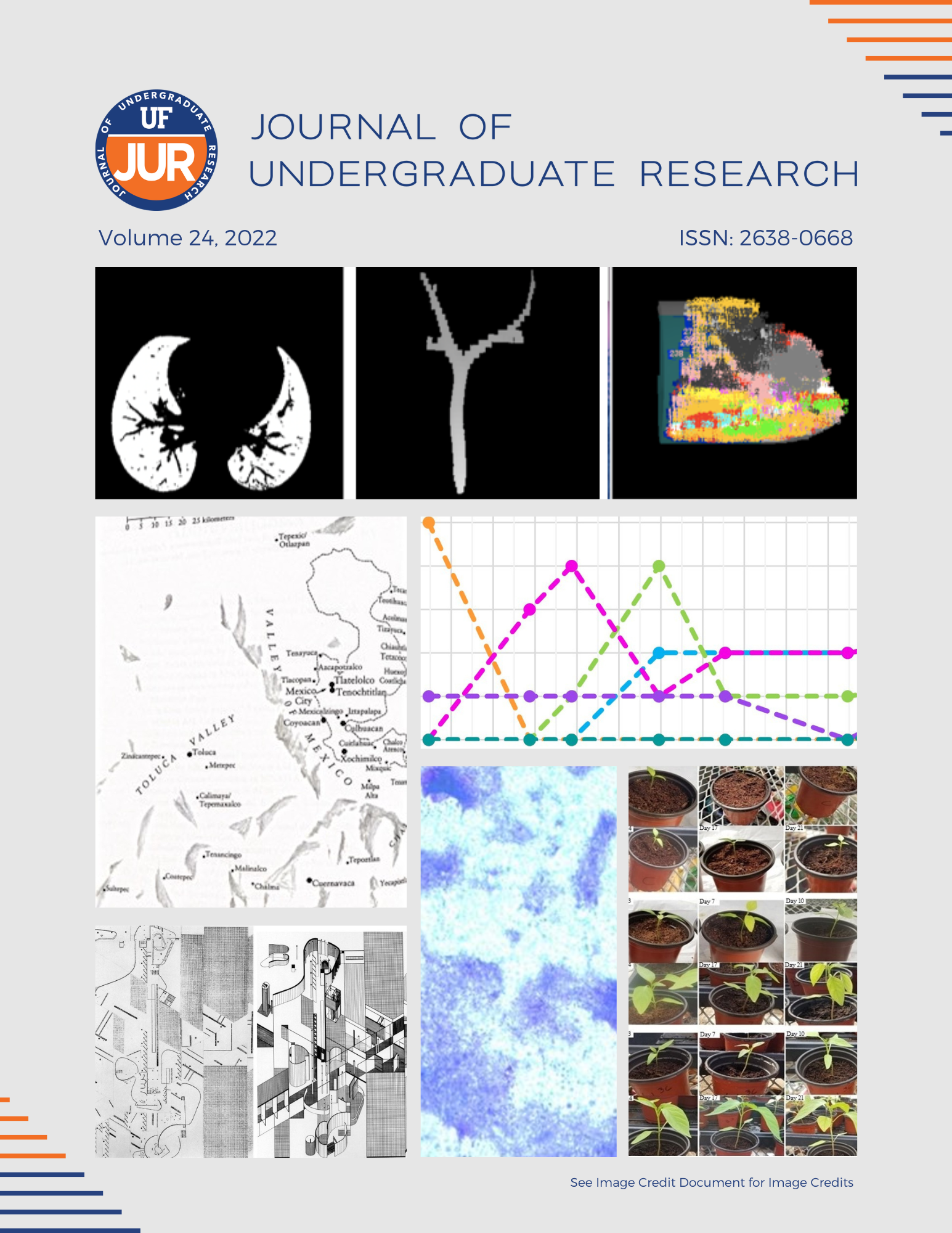Simulation of Ternary Organic Solar Cells to Study the Effects of Morphology and Material Properties on Power Output
DOI:
https://doi.org/10.32473/ufjur.24.130654Keywords:
Ternary organic solar cells, morphology, fullurene acceptorsAbstract
Ternary organic solar cells were simulated as a 3D grid of resistors and photodiodes to study how a secondary acceptor as a third material affects the overall blend to optimize for power output. The voltage at zero current, VOC, of the donor and secondary acceptor interfaces should be at least that of the primary system. When the thickness and secondary acceptor conductivity are high, it is better for a secondary acceptor to stick to the main acceptor due to an asymmetry in current pathways. Otherwise, it is better to place the secondary acceptor next to the donor to increase the amount of donor : acceptor interfaces. These results are likely most applicable to the addition of fullerene acceptors into donor : non-fullerene acceptor blends, since their potential benefits come from an increased conductance and morphology as opposed to increasing the absorption spectra.
Downloads
Published
Issue
Section
License
Copyright (c) 2022 Alex Giovannone, Selman Hershfield

This work is licensed under a Creative Commons Attribution-NonCommercial 4.0 International License.
Some journals stipulate that submitted articles cannot be under consideration for publication or published in another journal. The student-author and mentor have the option of determining which journal the paper will be submitted to first. UF JUR accepts papers that have been published in other journals or might be published in the future. It is the responsibility of the student-author and mentor to determine whether another journal will accept a paper that has been published in UF JUR.

